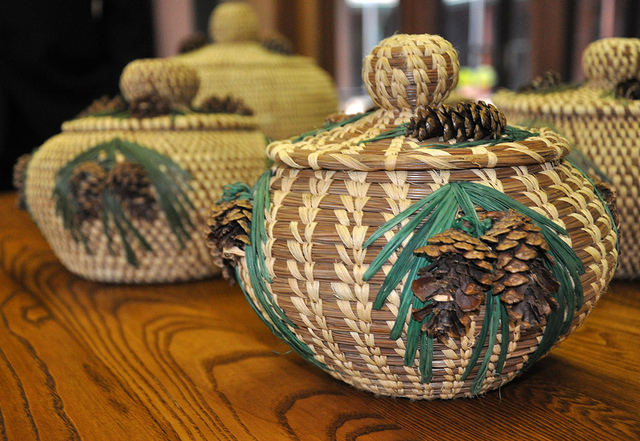 Photo by Catherine Bukowski.
Photo by Catherine Bukowski.What is it?
Forest farming is the intentional cultivation of edible, medicinal or decorative specialty crops beneath native or planted woodlands that are managed for both wood and understory crop production. It does not include the gathering of naturally-occurring plants from native forests, also known as wildcrafting. Forest farming can provide profitable opportunities for forest and woodland owners, nut growers, sugar maple growers, and herb growers.
Benefits: Forests can sustainably produce more than just wood
Extra income and diversification. Cultivation of specialty crops in a forest setting provides new sources of annual or periodic income before, or instead of, timber harvests.
High value products. A wide variety of plants can be grown in a forest to produce natural or processed (value-added) edible, herbal, medicinal, decorative and craft products.
Ecologically responsible. The intensively-managed cultivation of forest plants that are endangered in the wild due to over-harvesting is the responsible alternative to wildcrafting.
Variety of nontimber forest products can be grown:
Suitable species. Shade-loving plants that are naturally adapted to grow under forest conditions are candidates for forest farming cultivation.
Research cultivation methods. Gather information about the biological and cultural requirements of understory plants in your forest. If possible, talk to other growers in your area. Research propagation methods and find sources of seed or cuttings.
Forest management aspects:
Forest management plan. Any forest farming enterprises should be integrated within your forest management plan. Determine any needed actions such as thinning, and any potential conflicts with silvicultural practices, e.g., herbicide applications.
Silvicultural benefits. Management of the forest canopy to provide optimum light levels for understory crops, e.g. by thinning and pruning, also improves tree growth and wood quality.
Marketing non-timber products from your agroforest:

Inventory. The first step is to identify native plants growing in your forest that may have economic value, and to assess the soil and climatic conditions of the site. The understory plant community changes as the forest grows and with silvicultural activities. Determine all the possible uses of the plants and products that can be made from them.
Market survey. Visit both retail outlet and wholesale buyers in your area to learn what forest-grown products they buy, including those produced from plants growing in your forest or which could be cultivated there. Learn about the buyer’s specific requirements regarding quantities, sizes, seasons, prices, etc.
Direct marketing. Retailing value-added products made from understory crops directly to buyers takes time but will give the best return to the landowner. Potential buyers include restaurants, ethnic markets, natural food stores and the public via the Internet.
Wholesale. By harvesting and processing understory crops grown in your forest, they can be sold to wholesale buyers. Growers can benefit by forming marketing cooperatives to provide a larger, consistent supply of plant materials.
Leasing. The simplest way to generate cash income may be to lease a portion of your forestland to others who will grow and harvest understory crops, although the return to the landowner will be less than other marketing methods. A clear lease contract is vital.


